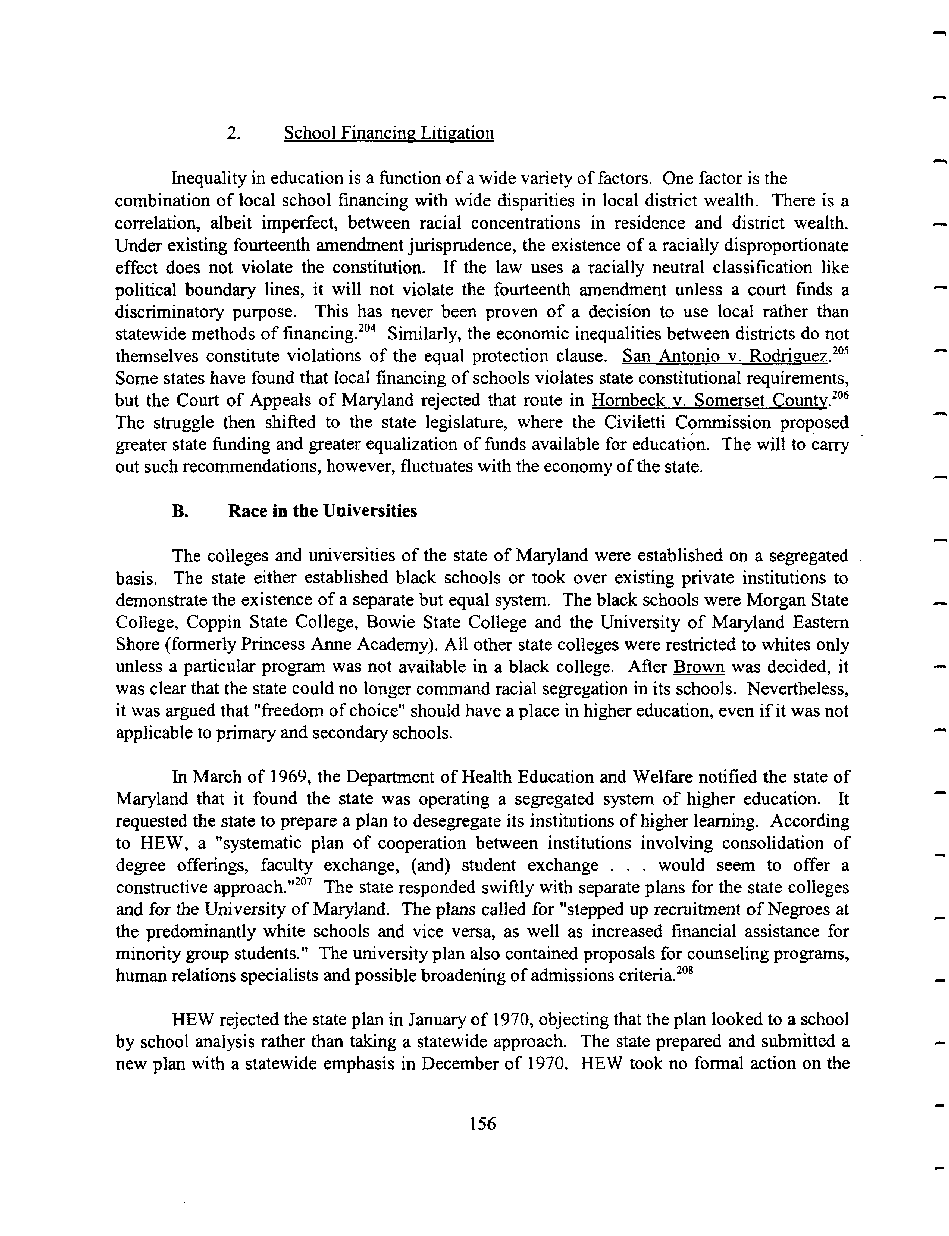|
2. School Financing Litigation
Inequality in education is a function of a wide variety of factors. One factor is the
combination of local school financing with wide disparities in local district wealth. There is a
correlation, albeit imperfect, between racial concentrations in residence and district wealth.
Under existing fourteenth amendment jurisprudence, the existence of a racially disproportionate
effect does not violate the constitution. If the law uses a racially neutral classification like
political boundary lines, it will not violate the fourteenth amendment unless a court finds a
discriminatory purpose. This has never been proven of a decision to use local rather than
statewide methods of financing.204 Similarly, the economic inequalities between districts do not
themselves constitute violations of the equal protection clause. San Antonio v. Rodriguez.205
Some states have found that local financing of schools violates state constitutional requirements,
but the Court of Appeals of Maryland rejected that route in Hombeck v. Somerset County.206
The struggle then shifted to the state legislature, where the Civiletti Commission proposed
greater state funding and greater equalization of funds available for education. The will to carry
out such recommendations, however, fluctuates with the economy of the state.
B. Race in the Universities
The colleges and universities of the state of Maryland were established on a segregated
basis. The state either established black schools or took over existing private institutions to
demonstrate the existence of a separate but equal system. The black schools were Morgan State
College, Coppin State College, Bowie State College and the University of Maryland Eastern
Shore (formerly Princess Anne Academy). All other state colleges were restricted to whites only
unless a particular program was not available in a black college. After Brown was decided, it
was clear that the state could no longer command racial segregation in its schools. Nevertheless,
it was argued that "freedom of choice" should have a place in higher education, even if it was not
applicable to primary and secondary schools.
hi March of 1969, the Department of Health Education and Welfare notified the state of
Maryland that it found the state was operating a segregated system of higher education. It
requested the state to prepare a plan to desegregate its institutions of higher learning. According
to HEW, a "systematic plan of cooperation between institutions involving consolidation of
degree offerings, faculty exchange, (and) student exchange . . . would seem to offer a
constructive approach."207 The state responded swiftly with separate plans for the state colleges
and for the University of Maryland. The plans called for "stepped up recruitment of Negroes at
the predominantly white schools and vice versa, as well as increased financial assistance for
minority group students." The university plan also contained proposals for counseling programs,
human relations specialists and possible broadening of admissions criteria.208
HEW rejected the state plan in January of 1970, objecting that the plan looked to a school
by school analysis rather than taking a statewide approach. The state prepared and submitted a
new plan with a statewide emphasis in December of 1970. HEW took no formal action on the
156
�
|

